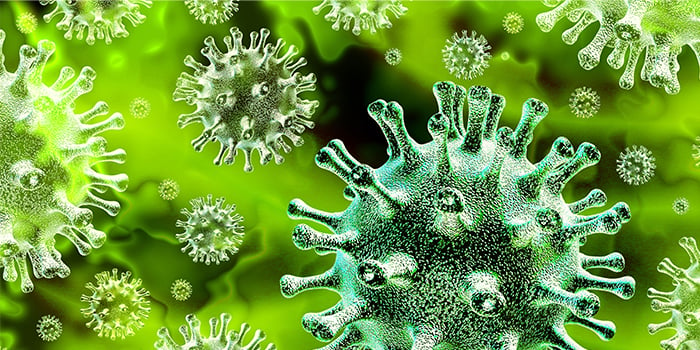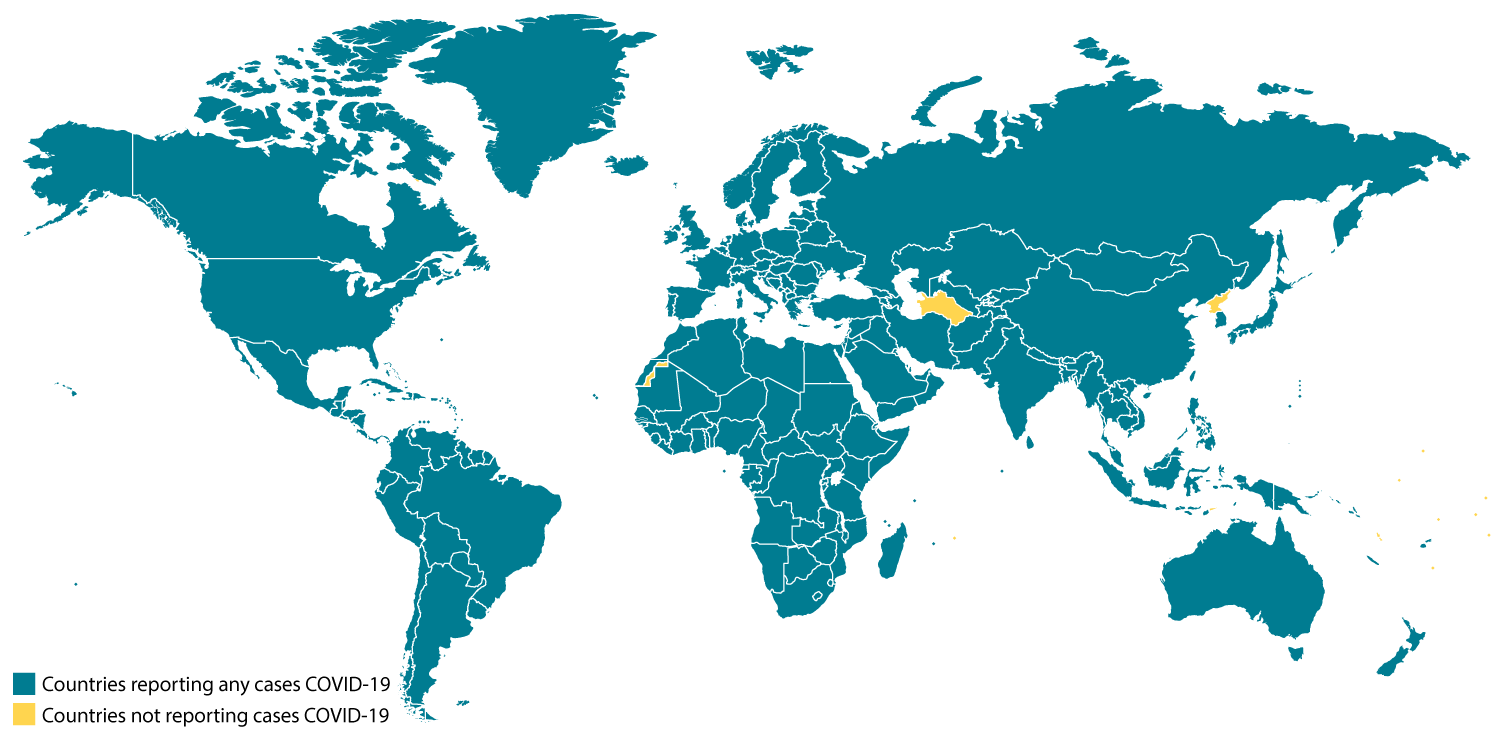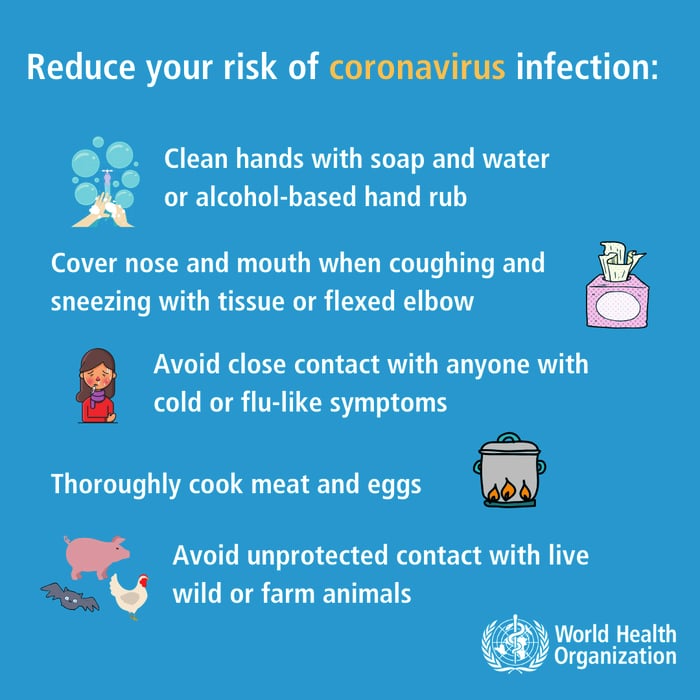
By: WAXIE Editorial Staff | January 30, 2020
According to the Centers for Disease Control and Prevention (CDC),1 2019 Novel Coronavirus (2019-NCoV) is a new virus which has been identified as the cause of an outbreak of respiratory illness in Wuhan City, Huebei Province in China. The earliest reported cases had a link to a large seafood and animal market in Wuhan, suggesting an initial animal-to-person spread, however a growing number of subsequent patients have not had exposure to animal markets, indicating that a person-to-person spread may be occurring.1
Since this new strain of coronavirus2 was originally detected on December 31, 2019,3 it has subsequently spread throughout China,4 and is now beginning to be seen in other countries. The first case in the United States5 was confirmed on January 21, 2020 in Snohomish County in Washington state,6 and the CDC continues to monitor the situation and is providing updates on the status of all known cases in the U.S. which are under investigation7.
The situation continues to be closely monitored by public health officials, with active communication taking place amongst the global public health community. Although the CDC considers this virus to be a very serious public health threat, based upon current information the current health risk to the American public is considered to be low at this time.

Map of Countries With Confirmed Cases of 2019-nCoV.
Image Source: CDC
Coronaviruses
According to the World Health Organization (WHO),8 Coronaviruses (CoV) are a large family of enveloped viruses which are known to cause illnesses ranging from the common cold, to the more severe illnesses such as Middle East Respiratory Syndrome (MERS-CoV) and Severe Acute Respiratory Syndrome (SARS-CoV).
Coronaviruses are zoonotic,9 meaning they are initially transmitted between animals and people, and these type of viruses are named for the crown-like spikes (or “coronas”) on their surface10 when viewed under an electron microscope. Human coronaviruses were first identified in the mid-1960s, and with the recent identification of 2019-nCoV, there are now seven known strains of human coronaviruses which can infect people.10
Most coronaviruses are not life threatening, and people around the world commonly get infected every year with one of the four known human strains of coronaviruses which cause the common cold.10 The 2019-nCoV strain is being monitored closely as a potentially more serious strain of human coronavirus similar to the strain identified as Middle East Respiratory Syndrome (MERS-CoV)11, which was responsible for an outbreak which started in Saudi Arabia in 2012, and the strain identified as Severe Acute Respiratory Syndrome (SARS-CoV)12, which was responsible for an outbreak which started in China in 2003.
Symptoms
For confirmed cases of 2019-nCoV infections, symptoms13 have ranged from infected people with little or no symptoms to infected people becoming severely ill and dying. Symptoms can include one or more of the following:
- Fever
- Cough
- Shortness of Breath
- Fatigue
At this time, CDC believes that symptoms may appear in as few as 2 days or as long as 14 days after exposure, but since this strain is still so new and in need of further research, these assumptions are based on observations of how symptoms developed with the MERS-CoV strain.13
In the most serious cases, 2019-nCoV infection can lead to pneumonia, severe acute respiratory syndrome, kidney failure, and even death.9
Prevention
While there is currently no vaccine available for 2019-nCoV, CDC is recommending that the public practice everyday preventive actions14 which can help to limit the spread of respiratory viruses, including the following best practices:
- Wash your hands often with soap and water for at least 20 seconds. If soap and water are not available, use an alcohol-based hand sanitizer.
- Avoid touching your eyes, nose, and mouth with unwashed hands.
- Avoid close contact with people who are sick.
- Stay home when you are sick.
- Cover your cough or sneeze with a tissue, then throw the tissue in the trash.
- Clean and disinfect frequently touched objects and surfaces.

Sources
- Centers for Disease Control and Prevention website, About 2019 Novel Coronavirus (2019-NCoV), updated January 23, 2020
- Centers for Disease Control and Prevention website, Coronavirus, updated January 23, 2020
- Live Science website, New China Coronavirus FAQ, updated January 26, 2020
- South China Morning Post website, Wuhan Coronavirus Confirmed In 29 Of China’s 31 Provinces, updated January 24, 2020
- Centers for Disease Control and Prevention website, First Travel-Related Case of 2019 Coronavirus Detected In United States, updated January 21, 2020
- Seattle Times website, Snohomish County Man With Wuhan Coronavirus Had Close Contact With At Least 43 People, Health Officials Say, updated January 24, 2020
- Centers for Disease Control and Prevention website, 2019 Novel Coronavirus (2019-nCoV) in the U.S., updated periodically and accessed on January 28, 2020
- World Health Organization website, Q&A On Coronaviruses, updated January 9, 2020
- World Health Organization website, Coronavirus, updated January 26, 2020
- Centers for Disease Control and Prevention website, Human Coronavirus Types, updated January 10, 2020
- Centers for Disease Control and Prevention website, Middle East Respiratory Syndrome (MERS), updated August 2, 2019
- Centers for Disease Control and Prevention website, Severe Acute Respiratory Syndrome (SARS), updated December 6, 2017
- Centers for Disease Control and Prevention website, About 2019-nCoV - Symptoms, updated January 26, 2020
- Centers for Disease Control and Prevention website, About 2019-nCoV – Prevention & Treatment, updated January 26, 2020

